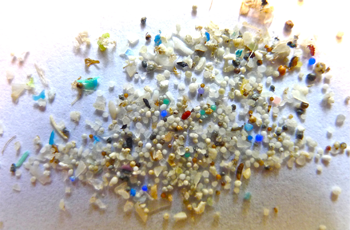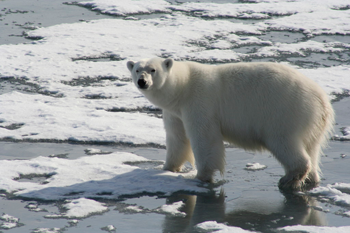Editors’ top picks for 2016
Here’s the year in review, focusing on the top 10 major stories

What were our editors' top stories of 2016? Read on to find out.
E. Otwell
By Janet Raloff
This year saw a redesign of Science News for Students. And along with it came a steady rise in readers. From far and wide, around half a million of you check in each month (coming from more than 100 countries). To serve you better, we have rolled out more topical stories, many of them posting on the very day they made news. We know that you’ve noticed and voted with your phone taps and mouse clicks as to which you found most interesting.
But we editors sometimes have a different idea of which are the most important stories. Some have the potential to prove game-changers in science and engineering. Others point to trends or issues that stand poised to affect us or our world. So sit back and review our top 10 hits for 2016. If you missed them earlier in the year, here’s your chance to catch up. Enjoy!
10: New insights into adolescent stress

Losing sleep over an upcoming tryout? Fearful about meeting your nemesis in the hallway or on the ball field? Stress is hardly new, especially in teens. But what primes the body to experience stress has remained somewhat sketchy. This year, science worked toward demystifying that.
For instance, animal data showed that binge drinking — which is common in many teens — appears capable of rewiring the brain in ways that make it more prone to stress. And a source in our story argues that “what happens in rats is suggestive of what happens in humans.” Also stressful: confronting people who strongly disagree with you. But standing up for your beliefs in these circumstances can actually counter that stress, researchers now report.
9: Young ears under assault
Subjecting your ears to loud music or other high-volume sounds puts hearing and other organs of the body at risk. In at least one study, almost one-third of all high-school students reported a nonstop ringing in their ears, known as tinnitus. The students were also abnormally sensitive to loud sounds. Both symptoms point to emerging hearing damage that could prove permanent and likely to worsen. And even a single event, such as attending a rock concert without ear protection, can cause temporary hearing loss or damage.
8: Hate incidents at schools rise after U.S. elections
At least 867 hate incidents took place in the 10 days following the November 2016 U.S. elections, a legal group reported. At least 648 of those were based on racism. And about three out of every eight cases took place at schools, sometimes even elementary schools. Our story pointed to social science studies that identify the long-term impacts of racism and how they can harm health. No one has to stand by and watch, though. We shared advice from psychologists who study racism on what students can do when they witness or are the targets of such hateful acts or taunts.
7: Microplastics cause aquatic harm

Tiny plastic beads and lint have been washing down drains and into waterways. They may have come from cleansing products or the breakdown of synthetic fabrics as they are laundered. New studies have been showing that animals in the sea eat those plastic bits, commonly referred to as microplastics. People who eat those oysters might also down the plastics the shellfish carried. One study found that baby fish may actually prefer this plastic to their normal food, even though it won’t give them the energy to keep them alive. And one likely reason for this unhealthy behavior: Some of that plastic actually smells like true food.
Editor’s note: On May 3, 2017, the journal Science retracted the study described in this article. That means the journal no longer stands by the paper and its conclusions. For more details, see our article on the study here.
6: New insights into pollution’s harm
Most everyone knows that breathing heavily polluted air can be deadly. In fact, new data show, it has become the world’s fourth leading cause of early death. Dirty air also fosters obesity. The study that determine that was in rats, although our sources noted it’s “highly likely that this is happening in humans.” Especially disturbing, a major new paper found that when it comes to the pollution released by burning coal, oil or gas — the fossil fuels — children suffer more than adults do.
One troubling source of pollution that people intentionally expose themselves to are the vapors from electronic cigarettes. In fact, e-cigs have overtaken cigarettes as the leading tobacco product used by teens. And new data show that teens who had no intention to smoke tobacco cigarettes often do after first experimenting with e-cigarettes.
But there are additional reasons why vaping may be very risky. A trio of scientists from different labs unveiled new data from tests in cells and animals. These showed e-cig vapors can impair behavior, harm the immune system, harm male sperm and threaten heart health. Through its effects on the DNA of cells in the gums and mouth, e-cig vapors can put your smile at risk. But all vapors are not alike. In fact, those vapors become more toxic the hotter an e-cigarette gets — and the more it’s used.
5: More details emerge about our solar system

Remember when Pluto was demoted from planethood? Well January 2016 saw the emergence of data suggesting our solar system may still host a ninth planet after all — one orbiting far, far beyond Pluto. The best estimates suggest it would be at least 10 times as massive as Earth and circle the sun once every 17,000 years.
Jupiter, the biggest planet, got a visitor this year. The Juno spacecraft is expected to spy on the planet for some 20 months. Yet even before Juno arrived, Earth-based studies showed that Jupiter’s stormy atmosphere sports turbulence that can stretch nearly 100 kilometers (60 miles) below the cloud tops. And while the planet is relatively cold, its Great Red Spot is so scalding hot that it could melt iron.
And Enceladus, a moon of Saturn, now appears to host a vast, salty ocean beneath its frozen surface. Not only might this moon host life, but it also appears to play an active role in the survival of its parent planet’s biggest ring.
4: Zika explodes in the Americas
Zika, a mosquito-borne disease, blazed across Brazil in 2015. But it erupted to global attention in January 2016 when thousands of babies were born with unusually small heads (and other problems). But that was just the beginning. In all, Science News for Students has run 10 stories throughout the year describing the disease and a trail of birth defects and other problems that have turned up in its wake. These include brain and joint abnormalities, eye oddities and the death of certain types of important brain cells.
3: Women in the sciences and engineering
Although women make up at least half of the adult population, they account for only a bit more than one in every four scientists and engineers. A major story in our magazine this year delved into the history of women in research (it used to be a lot worse) and the prospects for improvement. An accompanying story pointed to studies showing how adults can sabotage a student’s attempt to train for a career in science or math. But another 10 blog posts showcased more than 100 women who beat the odds to find a successful career in research of all types. You can read about them and more here in our new collection containing stories about Women in STEM (science, technology, engineering and math).
2: Climate change impacts intensify
Earth’s climate has been changing notably in recent decades. That’s no surprise. But a spate of new studies and reports that came out this year point to the worsening impacts of those changes. These changes eventually will impact every person and nearly every ecosystem on the planet. Last year, many areas suffered from record heat, and not just in summer. That heat may turn out to be normal for the globe within a decade.

Another study showed that Earth’s recent warming has caused sea levels to rise faster during the 20th century than at any time during in the previous 2,800 years. This prompted people living on an island above Alaska’s north coast in August to vote to abandon their island home. Sea-level rise had already washed away much of the island, turning these people into climate migrants.
Polar bears normally summer atop ice floes, diving off when it’s time to hunt. But with less ice on the sea they’re swimming more than ever in search of food. One young female’s nonstop swim lasted nine days. Things could get far worse. And soon. Arctic sea ice reached a record low in March 2016. By 2050, it could fully disappear during summer months, a new analysis reported. That would be the first time the Arctic was warm enough to be ice-free in 125,000 years.
1: Gravity waves discovered — at last!
In November 1915, Albert Einstein unveiled a new way of looking at gravity. The math to explain this came to be known as general relativity. In 1916, Einstein realized that this new theory also predicted the existence of gravitational waves — now commonly called gravity waves. Yet it would be February 2016, a whole century, before anyone confirmed that gravity waves exist. Four months later, scientists offered a second confirmation of the phenomenon. We outlined the exploration for those mystery waves. We also provided an explainer on what they are and how they differ from most other waves. As one astronomer who was not involved with either project concluded: “The era of gravitational wave astronomy is upon us.” This new field has also given rise to a whole new unit for measuring massive outpourings of energy. It’s the yottawatt!







